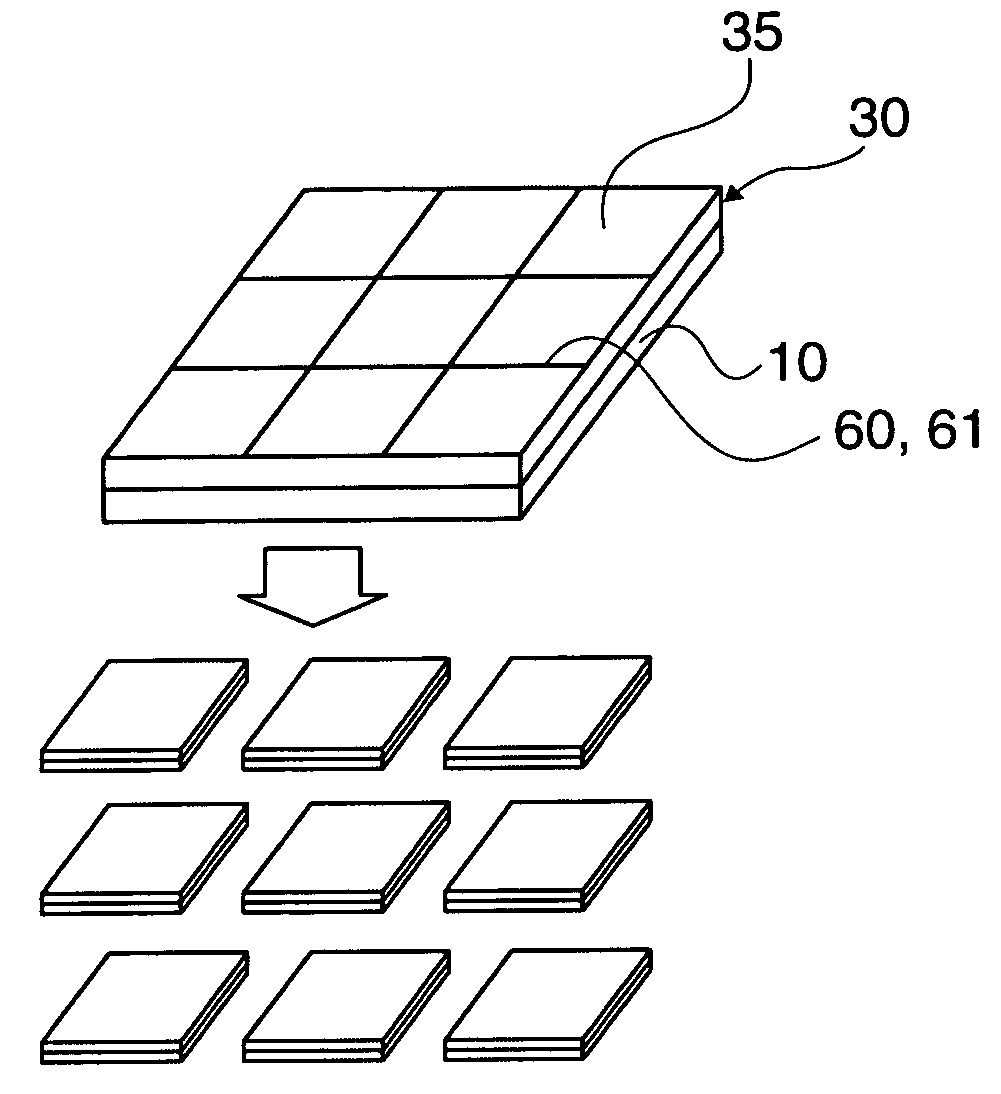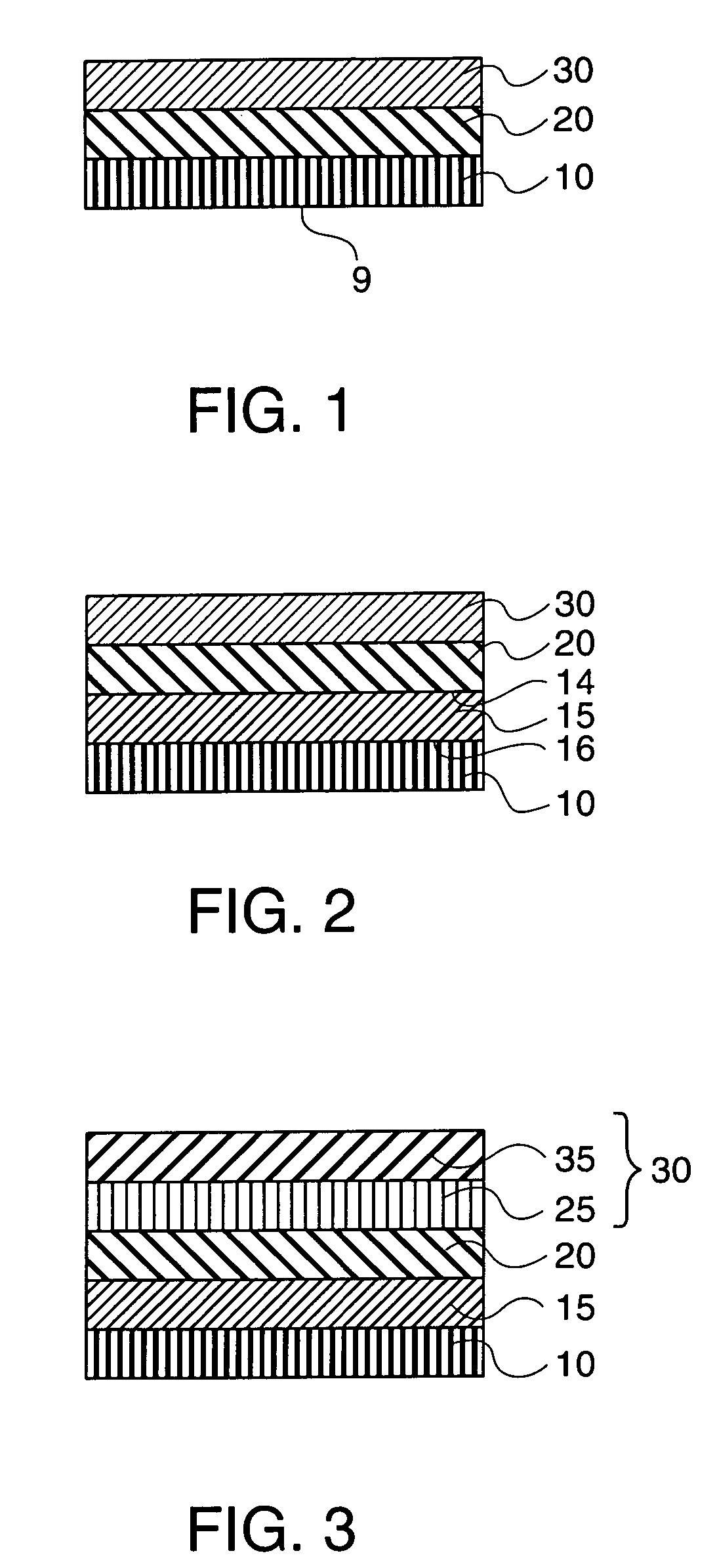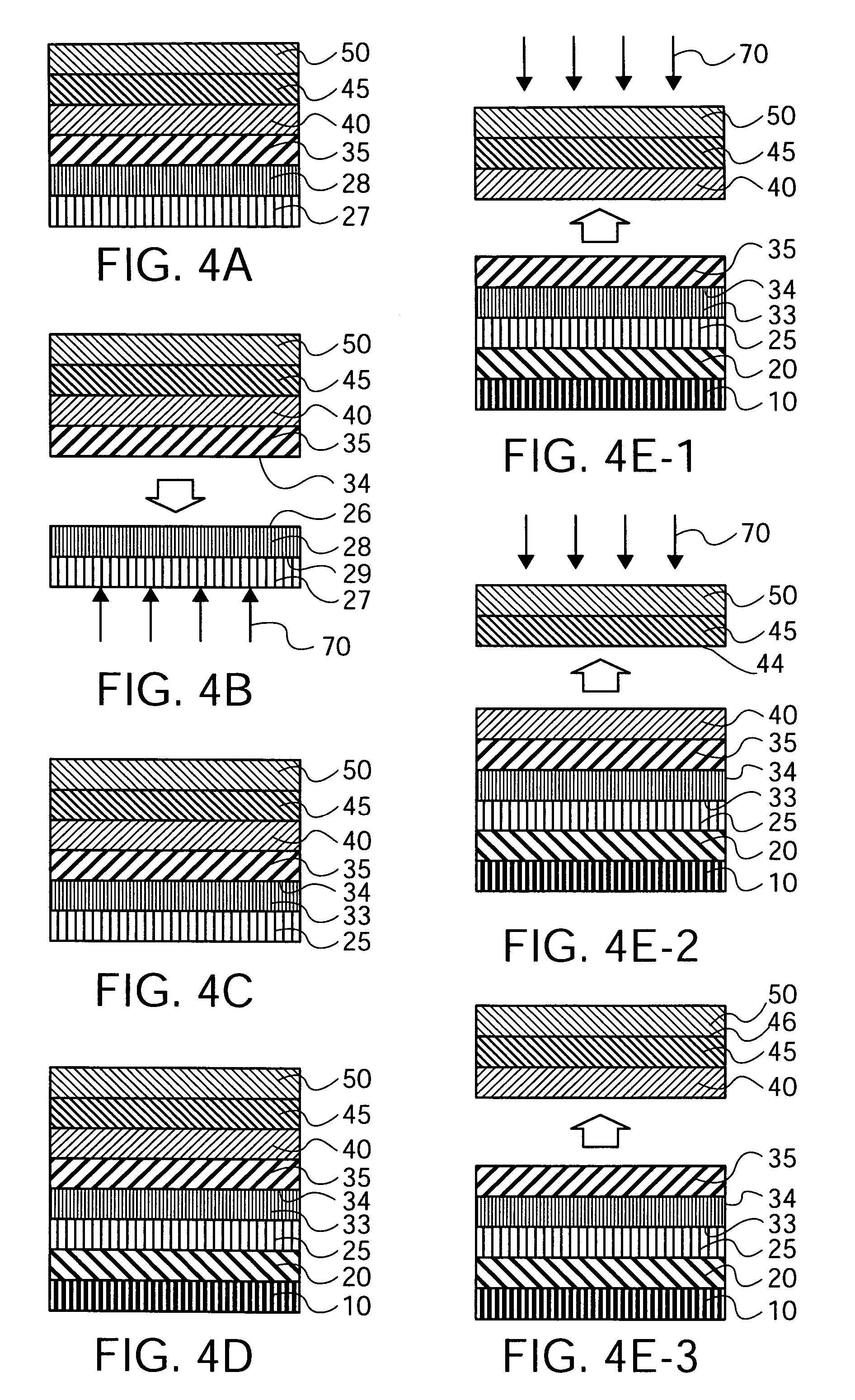Thin film device supply body, method of fabricating thin film device, method of transfer, method of fabricating semiconductor device, and electronic equipment
a technology of thin film devices and supply bodies, applied in the direction of semiconductor devices, basic electric elements, electrical equipment, etc., can solve the problems of difficult handling of each thin film device individually and conducting inspection or mounting processes promptly, and achieves easy peeled and transferred, easy handling in fabrication and shipment, and flexibility.
- Summary
- Abstract
- Description
- Claims
- Application Information
AI Technical Summary
Benefits of technology
Problems solved by technology
Method used
Image
Examples
first embodiment
[0053]FIG. 1 shows a thin film device supply body according to a first embodiment of the present invention. As shown in the figure, in the thin film device supply body, a thin film device 30 is formed on one surface (the upper surface) of a supporting substrate 10 with a temporary fixing adhesive layer 20.
[0054]The supporting substrate 10 stably supports the thin film device. Glass such as soda glass, heat resistant glass such as Corning 7059 (product name), Nippon Electric Glass OA-2 (product name), etc., or silicon wafer etc., can be used for the supporting substrate 10 in addition to quartz glass. These substrates are hard and have excellent characteristics in shape stability.
[0055]The supporting substrate 10 is preferably a substrate that has light transparency in order to supply light energy (or heat) to the temporary fixing adhesive layer 20 from a back face 9 of the supporting substrate 10.
[0056]The temporary fixing adhesive layer 20 preferably has a characteristic in that ad...
second embodiment
[0062]FIG. 2 shows a second embodiment of the present invention. In the figure, portions corresponding to those in FIG. 1 are given the same numerals and the explanation thereof is omitted.
[0063]In the thin film device supply body of the embodiment, the supporting substrate 10 includes a first peeling layer 15. The thin film device 30 is formed on the upper surface of the peeling layer 15 (the surface that is not touched to the supporting substrate 10) with the temporary fixing adhesive layer 20. That is, the peeling layer 15 and the temporary fixing adhesive layer 20 are sandwiched between the supporting substrate 10 and the thin film device 30. As described later, an amorphous silicon layer, etc., can be used as the peeling layer 15. In the peeling layer 15, for example, the interatomic or intermolecular bonding force is lost by applying energy with laser light. As a result, peeling (destruction) occurs in the peeling layer 15, at an interface 16 of the peeling layer 15 and the su...
third embodiment
[0065]FIG. 3 shows a third embodiment of the present invention. In the figure, portions corresponding to those in FIG. 1 are given the same numerals and the explanation thereof is omitted.
[0066]In the thin film device supply body of the embodiment, the thin film device 30 is bonded to the supporting substrate with the peeling layer 15 and the temporary fixing adhesive layer 20. The thin film device 30 is composed of a flexible substrate 25, a thin film element layer 35 formed on the flexible substrate 25, and the like. The thin film device 30 is bonded to the flexible substrate 25 with an adhesive layer that is not shown in the figure and will be described later as a permanent adhesive layer 33 in FIG. 4. That is, the thin film device supply body is formed as the stacked structure of the supporting substrate 10, the peeling layer 15, the temporary fixing adhesive layer 20, the flexible substrate 25, the permanent adhesive layer 33, and the thin film element layer 35.
[0067]The flexib...
PUM
 Login to View More
Login to View More Abstract
Description
Claims
Application Information
 Login to View More
Login to View More - R&D
- Intellectual Property
- Life Sciences
- Materials
- Tech Scout
- Unparalleled Data Quality
- Higher Quality Content
- 60% Fewer Hallucinations
Browse by: Latest US Patents, China's latest patents, Technical Efficacy Thesaurus, Application Domain, Technology Topic, Popular Technical Reports.
© 2025 PatSnap. All rights reserved.Legal|Privacy policy|Modern Slavery Act Transparency Statement|Sitemap|About US| Contact US: help@patsnap.com



